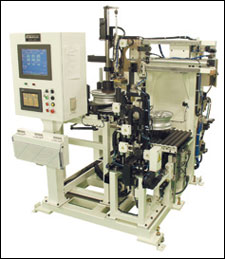 Q: What are the primary causes of ride vibration within transportation vehicles?
Q: What are the primary causes of ride vibration within transportation vehicles?
A: There are many potential causes. Everything that rotates can cause vibration if the components are not balanced. Everything from the tire/wheel assembly to individual engine components such as crankshafts, if not properly balanced, will vibrate at differing frequencies causing different effects.
The effects that imbalance has on ride quality is complicated for many reasons. Road surface issues, vehicle complexity, variances in suspensions systems, and multiple causes of ride discomfort make it difficult to generalize across a cross section of vehicles. At the most basic level, imbalance leads to vibration and this vibration leads to poor ride quality. Various resonant frequencies exist throughout the vehicles suspension and tire/wheel system. Many of these resonant frequencies can combine to create an extremely poor ride including tactile and visual vibrations, noise, and even dizziness and motion sickness. Critical speed effects can occur at varying frequencies to create effects that are perhaps as much as one or two hundred times the initial source.
Evaluating the ride quality of a vehicle and in turn identifying the specific cause is a subjective event. Testing experts have a number of terms that are used to try to describe the effects of imbalance as well as many other ride quality problems. Although data exists for specific tests on specific vehicles, many of the conclusions are subjective “seat of the pants” results leaving little empirical data.
Q: What causes most of the failures within automotive components?
A: As in the case of the first question, there can be many causes. Stress, fatigue, torsion failure, can all cause failures within automotive components. Design of the part is the first thing to look at. Engineers use the best tools available to subject their individual part design to simulations. If the design is sound, the parts need to be subjected to rigorous testing under real-world conditions. We see this in all aspects of our testing equipment including torsion and tensile testers and certainly in vibration testers, such as our shakers. Some of the assumptions that are made are that all parts are manufactured within a certain balance tolerance that matches the design requirements.
When parts rotate, they create centrifugal force (Fc). This is a very important concept to understand when discussing balance. When a tire is out of balance for instance, or equilibrium, the occupants only notice it when the car is moving. As the tire turns, centrifugal force is created regardless of its equilibrium status, but imbalances create uneven forces and cause the ride quality problems. Centrifugal force is also important because the only method currently in use for measuring dynamic balance is to spin the tire and measure the differences in centrifugal forces generated.
It is important to note that as the mass or radius of the part in question increases, the centrifugal force increases directly and proportionally. However, as speed increases the centrifugal force increases in a squared fashion. If the outside diameter of a tire were to double the increase in Fc would double. On the vehicle, if the speed increases from 15 to 30 miles per hours, the Fc would increase 4 fold and if it were to go to from 15 to 60 miles per hour, the Fc increases by a factor of 16.
These forces not only transmit vibration to the rest of the vehicle whether it’s a tire/wheel assembly or a crankshaft but will also cause wear of other parts. As imbalance parts rotate, they may wear out bearings which will eventually fail and cause catastrophic failure within an engine.
Q: How tight are most manufacturer’s tolerance for balance?
A: Tolerances vary by manufacture and by parts. Parts that rotate very fast (e.g. crankshafts) may have tighter tolerances due to the speed effect (see last question). Very thin parts may only be checked for static balance as couple imbalance may have little effect. A typical customer for a tire wheel assembly may correct down to 7 grams static and 11 grams couple. In our hard disk balancers, because the extremely high speeds, the tolerances are down into the microgram range.
The proper balancing machine that can both measure accurately and repeatably is essential prior to the correction process. The correction process is the other half of the equation and can contain many methods of weight addition (by hand, welding, epoxy) or by weight removal (drilling, milling). For tire and wheel assemblies, cut to length weights automatically applied by a robot offer the best solution to balance an assembly down to theoretical zero. The AutoW8T® designed by Esys Corporation with Kokusai, Inc. has this capability.
